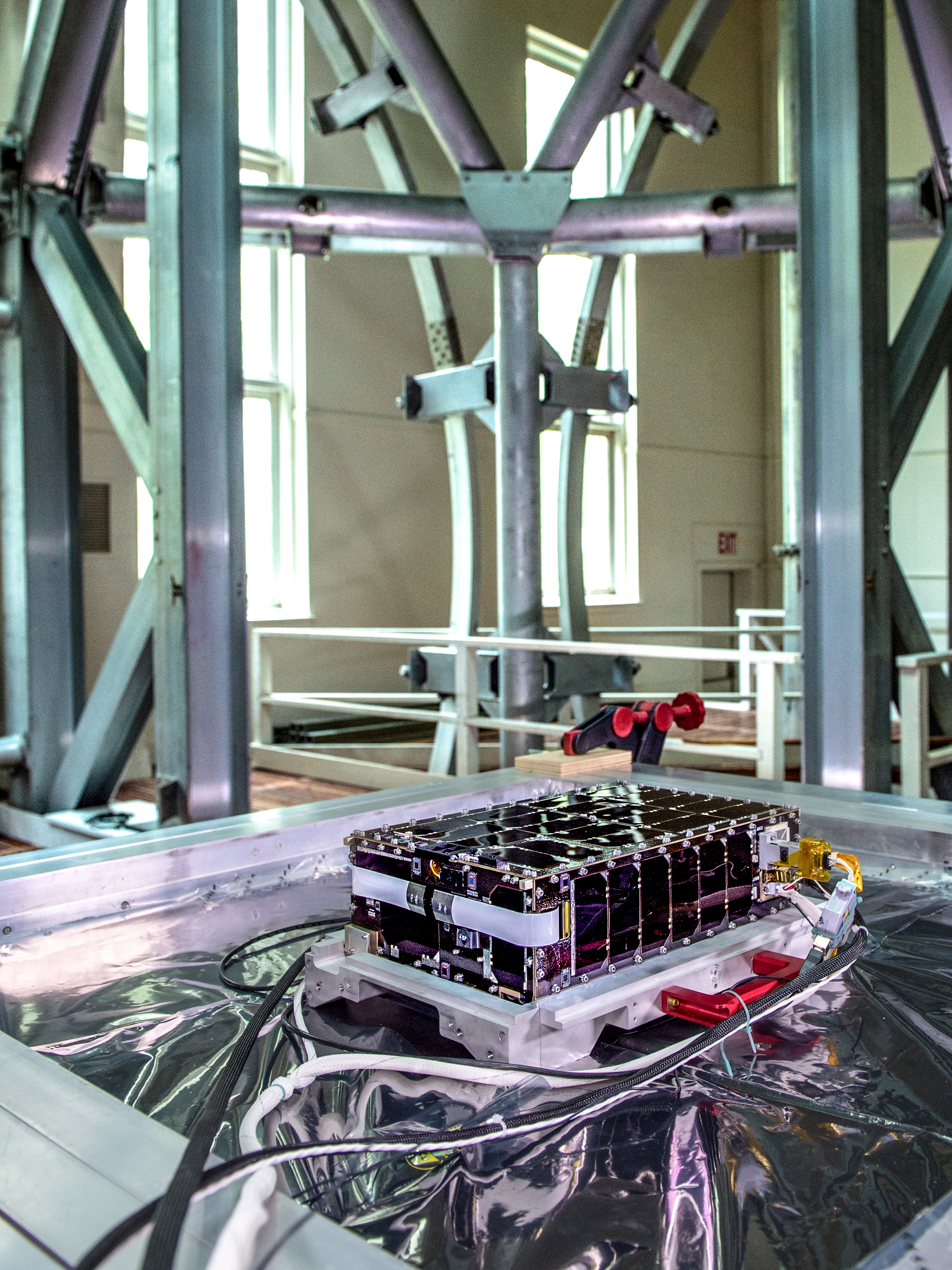Mini-satellite Named After 'God of Dawn' Will Launch This Month
A little satellite named after the mythological Norse god of the dawn will be sent into orbit this month to collect data on Earth's atmosphere.
The nanosatellite, known as Dellingr, is about the size of a table picture frame, and will carry six instruments, one of which is smaller than a fingernail.
After ascending toward the International Space Station aboard a SpaceX Falcon 9 rocket, the tiny satellite will later be deployed into low Earth orbit, NASA officials said in a statement.
Small-satellite missions can be challenging to conduct: A mission with a similarly loaded cubesat, or miniature spacecraft, was aborted in 2016 just six months after it launched. That's because the Ion and Neutral Mass Spectrometer Instrument on board the spacecraft — which researchers use to examine how solar radiation is acting upon Earth's atmosphere — was not communicating to mission operators properly, thereby causing a delay in making the instrument function. However, the new satellite's developers are confident that all six instruments on board Dellingr will deliver good results because several tests were successful in suborbital demonstrations, NASA officials said in the statement. [CubeSats: Tiny, Versatile Spacecraft Explained (Infographic)]
Dellingr's team includes scientists and engineers from the Heliophysics Science Division at NASA's Goddard Space Flight Center in Maryland and the center's Applied Engineering and Technology Directorate. Scientists with the mission hope to prove that the Ion and Neutral Mass Spectrometer instrument, which previously failed, can be functional. They also want to show that this cubesat model is more reliable than other prototypes, and encourage future use of relatively inexpensive spacecraft like Dellingr. Currently, the price tag for producing a cubesat is roughly $30,000.

The building blocks of cubesats are "units" that are 4 inches (10 centimeters) on a side. The Dellingr cubesat is a 6U, which means it's the size of six of these units put together. The cubesat will have six instruments for measuring unique phenomena, such as the expansion and contraction of the Earth's outer atmosphere caused by the sun when its activity levels increase and decrease. In addition to being inexpensive, a tiny platform like this one can be sent into orbit with other nanosatellites to gather simultaneous observations from multiple points, which more conventional spacecraft cannot gather because they are too large, NASA officials said.
According to NASA, the data collected by Dellingr will include information on how the sun influences the Earth's upper atmosphere, also known as the Ionosphere. This atmospheric layer can affect the transmission of radio waves, especially when it expands or contracts due to the sun's 11-year cycle of change. The ionosphere holds atoms or molecules that carry positive or negative charge because of solar and cosmic radiation that interacts with them. And as the sun enters solar minimum — a low-activity period that happens every 11 years— the ionosphere expands.
Get the Space.com Newsletter
Breaking space news, the latest updates on rocket launches, skywatching events and more!
The Ion and Neutral Mass Spectrometer will have the chance to redeem itself from its defectiveness last year by sampling the densities of ionized and neutral atoms in this atmospheric region when Dellingr launches on its maiden journey this month.
Editor's Note: This story was corrected at 8:15 p.m. EDT to clarify that "6U" refers to a cubesat's size, not the number of instruments it carries.
Follow Doris Elin Salazar on Twitter @salazar_elin. Follow us @Spacedotcom, Facebook and Google+. Original article on Space.com.
Join our Space Forums to keep talking space on the latest missions, night sky and more! And if you have a news tip, correction or comment, let us know at: community@space.com.

Doris is a science journalist and Space.com contributor. She received a B.A. in Sociology and Communications at Fordham University in New York City. Her first work was published in collaboration with London Mining Network, where her love of science writing was born. Her passion for astronomy started as a kid when she helped her sister build a model solar system in the Bronx. She got her first shot at astronomy writing as a Space.com editorial intern and continues to write about all things cosmic for the website. Doris has also written about microscopic plant life for Scientific American’s website and about whale calls for their print magazine. She has also written about ancient humans for Inverse, with stories ranging from how to recreate Pompeii’s cuisine to how to map the Polynesian expansion through genomics. She currently shares her home with two rabbits. Follow her on twitter at @salazar_elin.









